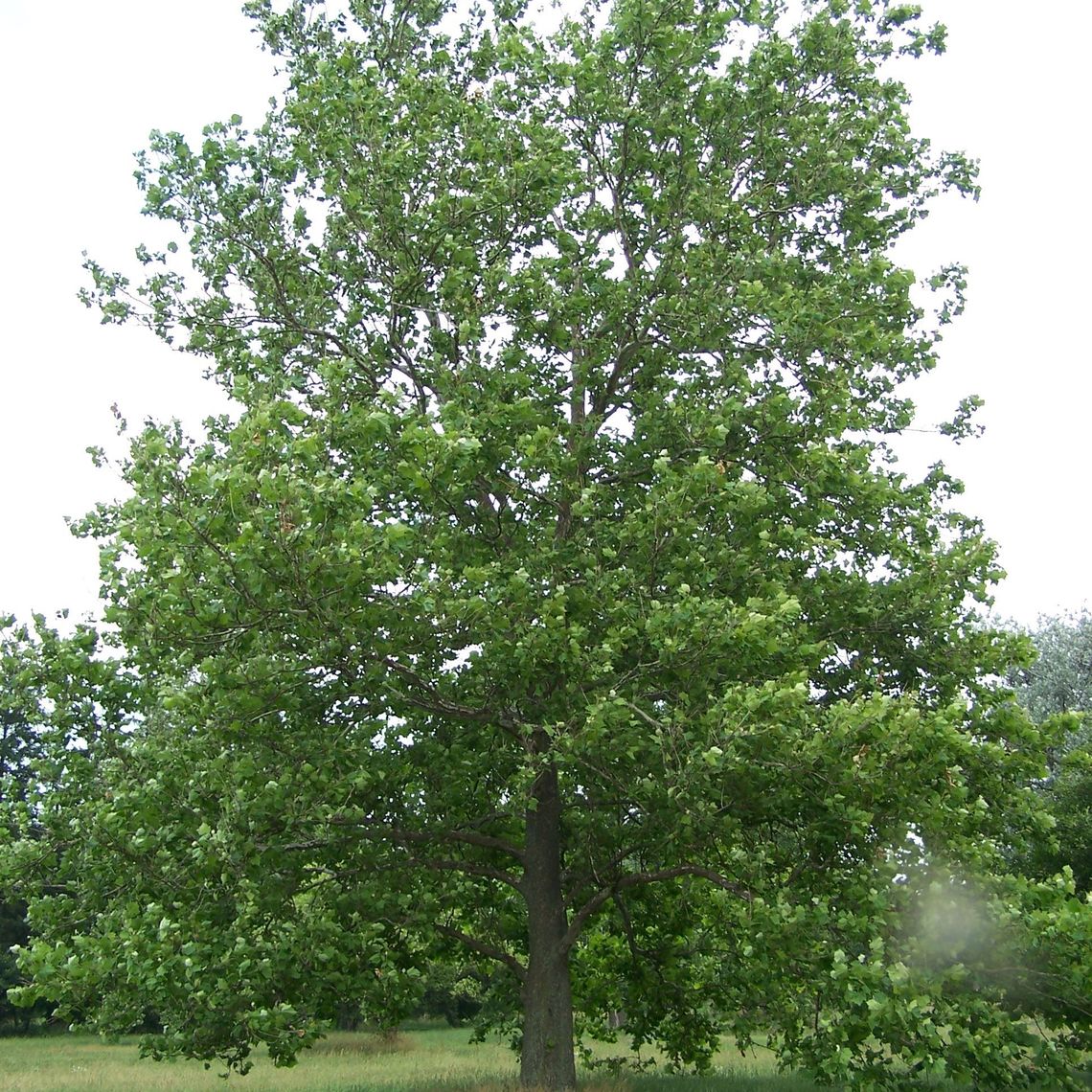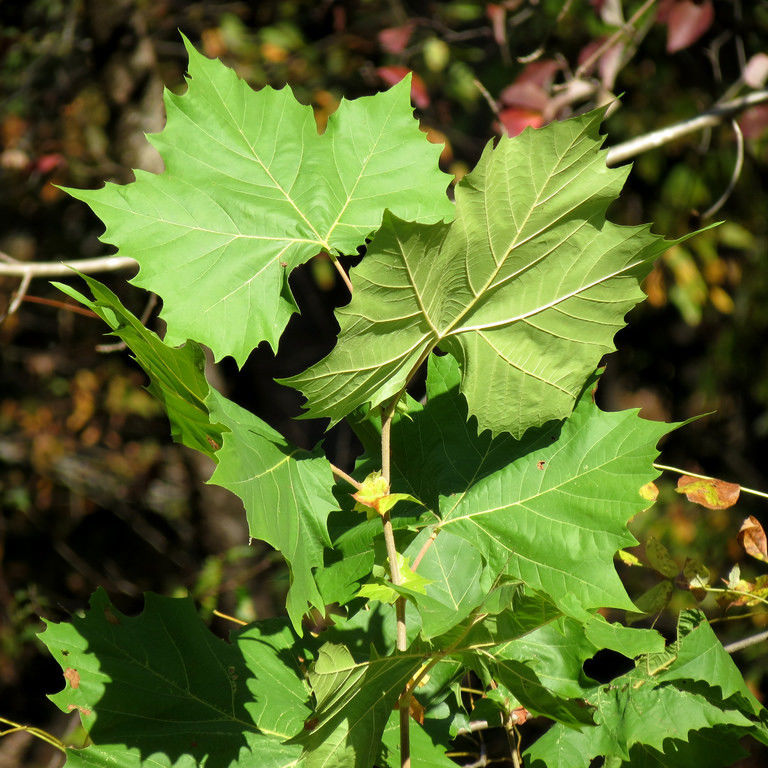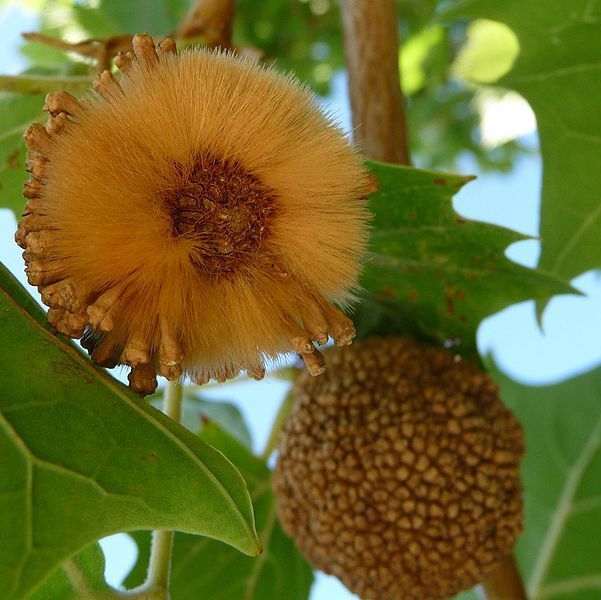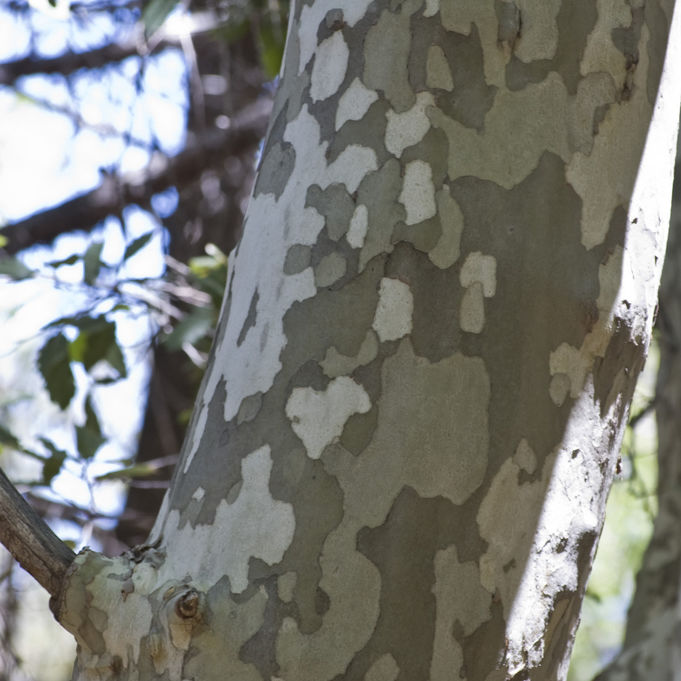American Sycamore (Platanus occidentalis)
The American sycamore is said to be the most massive of the eastern North American native trees. It grows 75-100 feet tall and has a large trunk diameter as well. The tree's most notable characteristic is its exfoliating brown bark which reveals the creamy white inner bark. The bark on older trees will often become all white towards the top of the tree. American sycamore wood is commercially used for furniture, cabinets, barrels, crates, and butcher blocks. This tree was also used by Native Americans to make dugout canoes. This tree attracts insect pollinators, birds, and small mammals.
Family: Platanaceae (Planetree/ Sycamore)
Characteristics: The 4-inch to 10-inch-wide leaves are broadly toothed, dark green, and have 3-5 lobes. In the fall, leaves turn a non-showy yellow-brown. In April, small flowers appear in rounded clusters. Male flowers are yellow, female flowers are red. The female flowers give way to singular spherical fruits which are brown and fuzzy. Each fruit holds numerous seeds. Bark is gray-brown and exfoliates, exposing the creamy white inner bark. With age, the tops of the trunk will become nearly all white. This tree has a rounded shape with horizontal branches, similar to the London planetree. The American sycamore grows 75-100 feet high and wide.
Foliage: Deciduous (leaves lost seasonally)
Geographic Origin: Southeastern United States (native)
Cultivation Notes: Requires high maintenance. Does best in full sun. Prefers alkaline, wet, and well-drained soils. This tree is tolerant of most air pollutants.
Number on Campus: 5
Sources: Dirr, Morton Arboretum, Missouri Botanical Garden





